Moselle Valley
Do you have a weakness for castles and fortresses or do you like fruity wines? Then the Moselle region is the right place for you. The Moselle River originates in the French Vosges and flows no less than 544 km to the German city of Koblenz where it joins the Rhine. This road trip winds its way along the German part of the river, also known as the Moselle Valley. In the Moselle Valley, 'Gemütliche' villages, large vineyards and traditional half-timbered houses adorn the landscape. Along the hill slopes of the valley, you will pass many impressive castles and palaces that will take you through the history of the region. Be sure to leave your camper for the day and explore the green surroundings on foot or by bike. On this route from Koblenz to Trier, you won't find any trendy hotspots along the way, but you will enjoy authenticity and cosiness while being guided by the Moselle.
The Moselle Valley is visited by many tourists in the summer, but it is also very beautiful in the autumn and spring.
Koblenz
Koblenz, the starting point of this route, is also the end point of the Moselle. In this city, the Moselle flows into the Rhine. This confluence is marked by the artificial land tongue Deutsches Eck. The Kaiser Wilhelm Memorial, an equestrian statue in honour of Kaiser Wilhelm I, who was partly responsible for the unification of the German Empire, is also located here. Opposite the Deutsches Eck, on the right bank of the Rhine, is the Ehrenbreitstein Fortress from the 19th century, which today serves as a museum, youth hostel and restaurant. In addition, there is a viewpoint in the fortress from where you get an endless view over the Moselle, the Rhine and the historic city centre of Koblenz. A cable car at the top of the hill takes you back to the left bank of the Rhine. On the way, you get a wonderful view of the Balduin Bridge, the Prussian government building and the city. In Koblenz you should plan at least two days. That way there is enough time to take a boat trip on the rivers and to visit the historical town centre with attractions such as the historical Am Plan square, the Saint-Kastor Basilica and the colourful half-timbered houses.
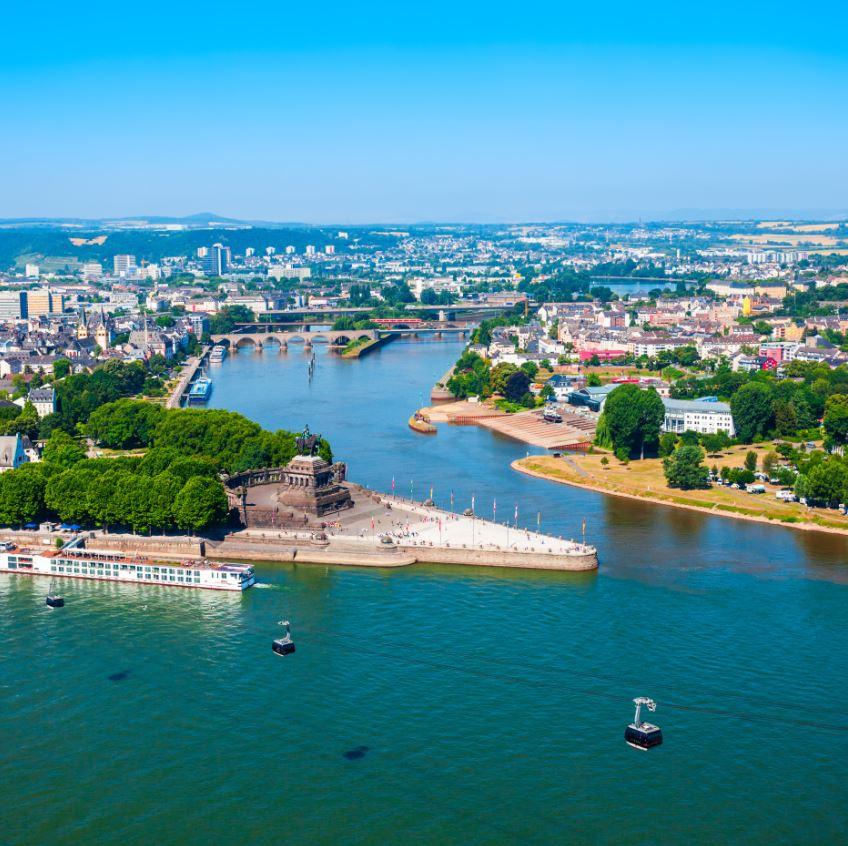
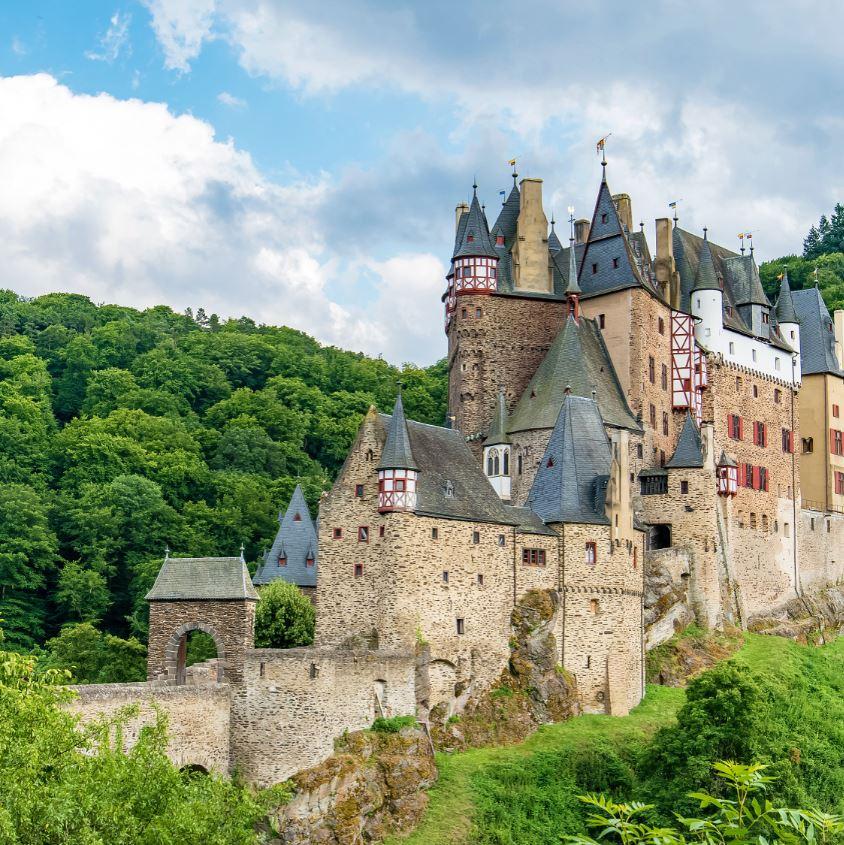
Brodenbach
About 25 kilometres south of Koblenz is Brodenbach. The village is located in a wooded area, which makes for a particularly favourable climate. The two side valleys, Brodenbach- and Ehrbach-valley, constantly bring fresh air into the village, which is why it was recognised by the state as a health resort. Brodenbach is an ideal destination for all kinds of hiking and cycling tours. A steep climb takes you to Ehrenburg, a lively castle where you can take an adventurous tour and sample the local delicacies. The perfect relaxation for the whole family. About a twenty-minute drive from Brodenbach is the fairytale-like Eltz Castle with no fewer than eight castle towers. The visit is a journey through eight centuries of history with elements from the Middle Ages and the Renaissance. After a visit to both castles and an invigorating walk in Brodenbach, we continue towards Cochem, a popular destination along the Moselle Valley.
Cochem
One of the most touristic cities along the Moselle is Cochem. This town has a cosy medieval centre where old working-class houses and baroque buildings alternate. At the quay, where, by the way, there are many nice terraces, boats moor and unmoor. A one-hour boat tour to Treis-Karden takes you to the lush vines on the banks of the Moselle. For romantics, there is an evening cruise along the atmospherically lit river villages.
The main attraction in Cochem is immediately noticeable on the way in. According to experts, the Reichsburg is one of the most beautiful castles in the region. The original medieval castle was destroyed in the 17th century, but a businessman rebuilt the remains into a mighty structure in neo-Gothic style. The trip to the castle is quite steep and takes about 15 to 30 minutes, depending on where you start. You cannot drive up to the castle with your camper van, but in the high season you can use a shuttle bus. If you have time to spare in Cochem, pay a visit to the old mustard mill. The mill is more than 200 years old and is still in use.
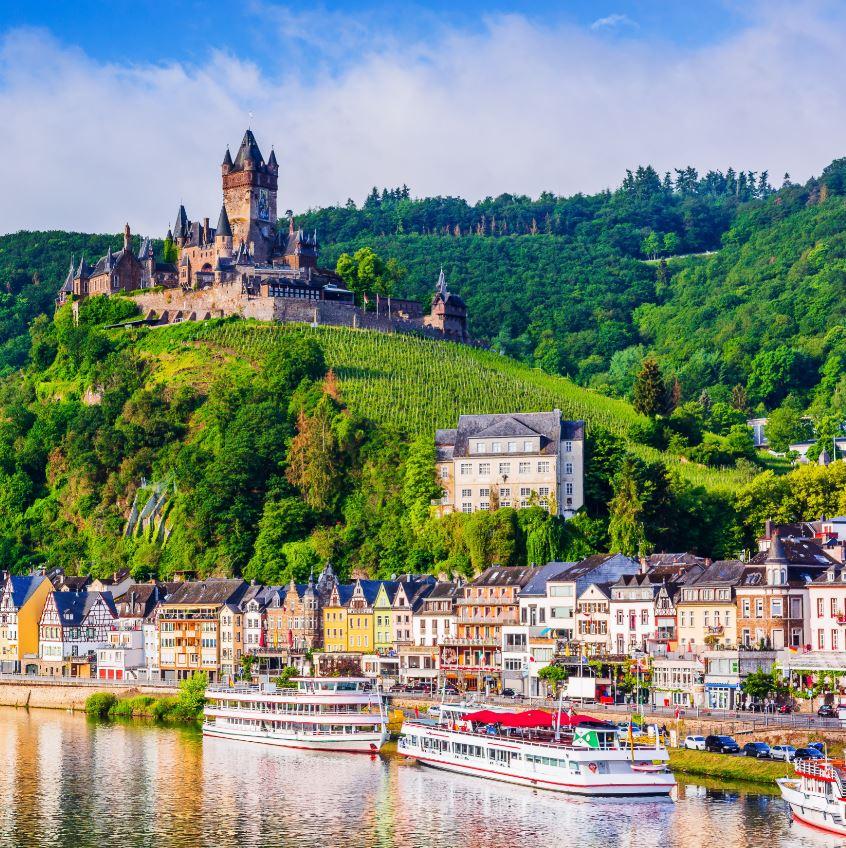
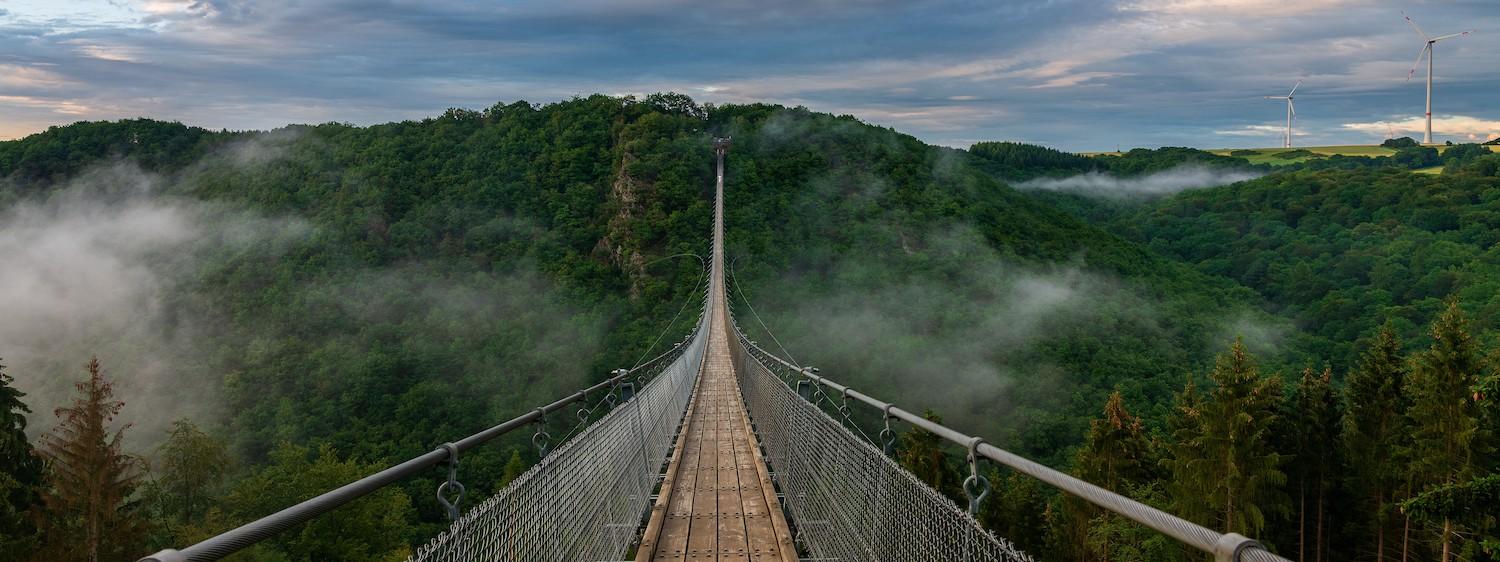
Beilstein
Beilstein is the perfect starting point for lovely walks through a green landscape along the river. It is perhaps the most beautiful and romantic village on the Moselle. The winding streets, the ivy-covered balconies and the flower boxes full of colourful geraniums and petunias complete the fairytale. It will not surprise you that this town has been nicknamed "Sleeping Beauty of the Moselle". Above the city, the Metternich Castle, which was destroyed by the French in 1689, dominates. From the ruins, you have a wonderful view of the city. Those who prefer not to venture onto the steep path leading to the castle can enjoy a beautiful view of the Moselle from between the vines at St. Joseph's Church.
A highlight not to be missed while you are in the area is the Geierlay Hängebrücke. This suspension bridge can only be reached on foot from the villages of Mörsdorf or Sosberg. Here, you can park your camper, car or motorbike and start the hike up. Once on the suspension bridge, you will be treated to a spectacular experience and a beautiful view of the Mörsdorfer Bachtal. The best way to see the bridge is on the Geierlayschleife circular walk of about 6 kilometres, which takes you both over and under the bridge. Please note that you still have to walk 3 km to the bridge and 3 km or more to get back, because you can only cross the bridge in one direction.
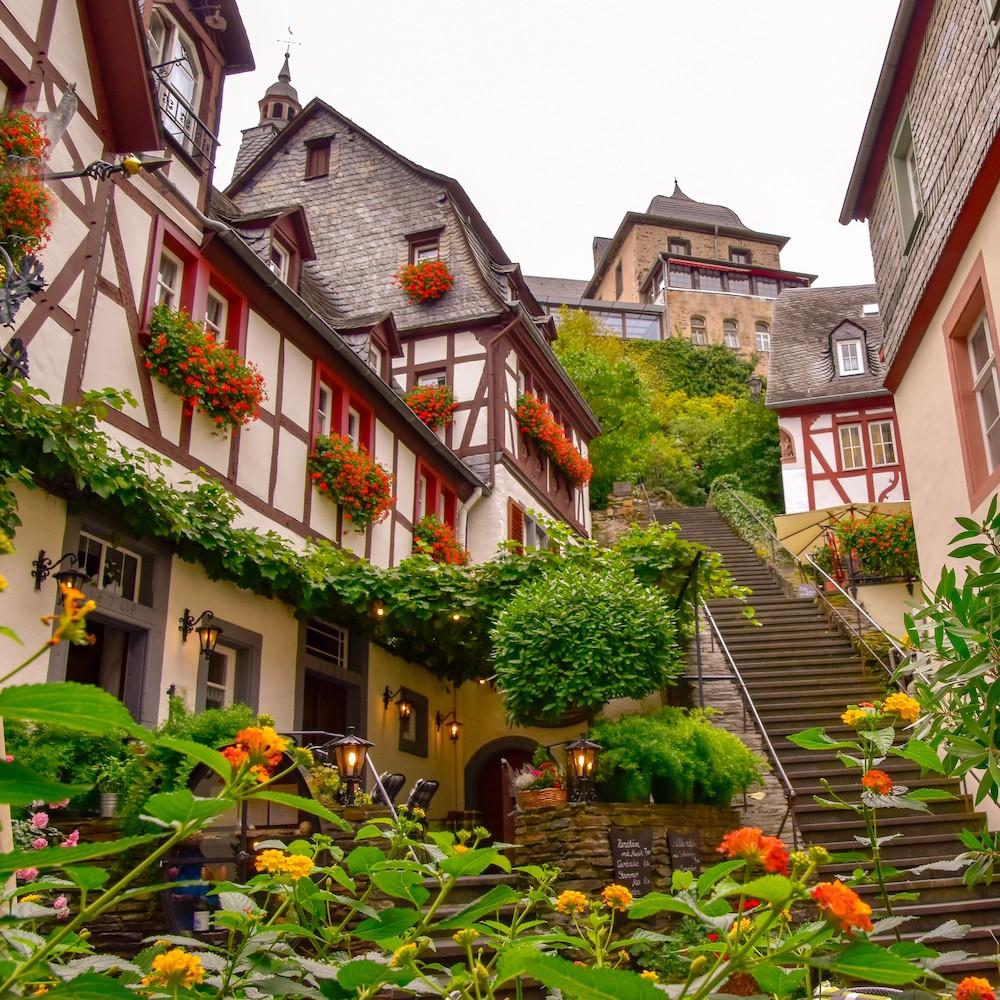
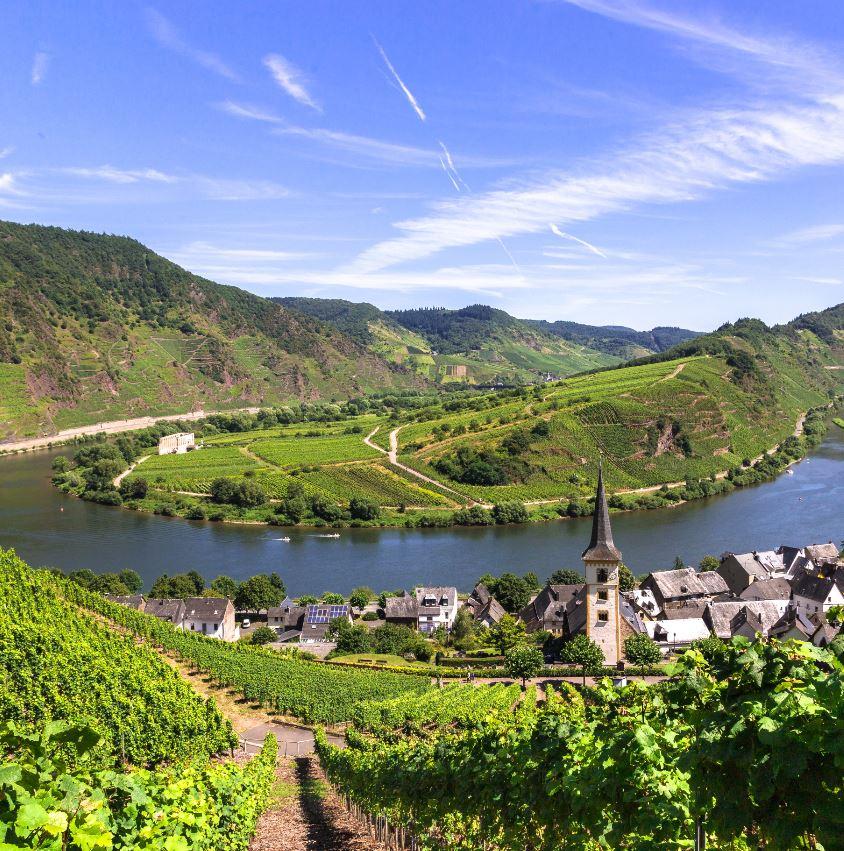
Bremm
The wine village of Bremm owes its fame to the Bremmer Calmont, Europe's steepest wine mountain. To climb this 68-degree mountain, you need good shoes, a good dose of perseverance and, above all, no fear of heights. In between the Riesling grapes, you climb to the top in about two hours, where you get a panoramic view of the Moselle, the centre of Bremm and the Stuben monastery. After this strenuous tour, Bremm is the perfect place to finish off with a refreshing Riesling wine. On the way to Traben-Trarbach, our next stop on this road trip, we make a short stop in Zell. This village is idyllically situated on one of the largest meanders of the Moselle, the Zeller Hamm. When you think of Zell, wine lovers immediately think of the vineyard "Schwarze Katz". The black cat is undoubtedly the centre of the village and was even given a real monument on the market square in the centre of the town. There is also a lot to discover in Zell in terms of culture. The Romanesque tower, the remaining parts of the old town wall, the narrow streets and the historic half-timbered houses with steep gables offer an insight into the town's past.
Traben-Trarbach
Amidst vineyards and forests, Traben-Trarbach lies in a hairpin bend of the Moselle. In the 19th century, the city suffered from several fires, as a result of which the two medieval city centres were largely lost. Only the old Brückentor and the Grevenburg Castle survived. A few years later, the town was rebuilt in the fresh Jugendstil style. The modern influences of this art movement in the city make for a nice change from the other towns in the area. A walk through the city is therefore worthwhile to look at each of the buildings. Around 1900, the city was known as one of the most important cities for the wine trade. For this reason, the capacity of the wine cellars was increased and cellars were built under large parts of the city centre. Some of these cellars consist of several storeys and vaults more than 100 metres long. A guided tour underground is therefore a special experience.
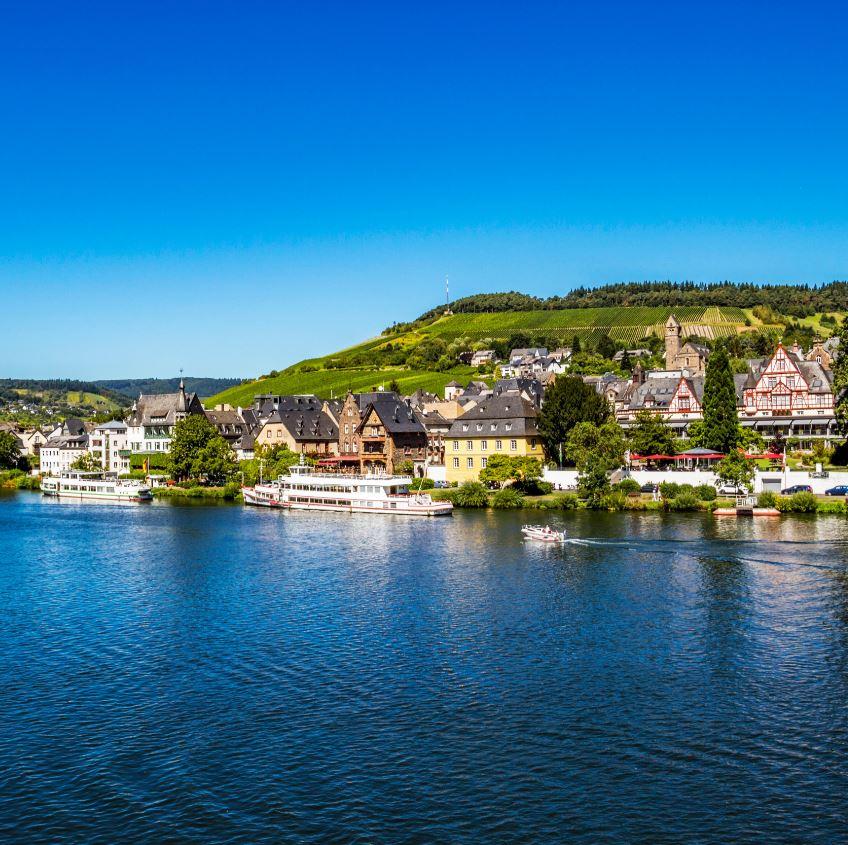
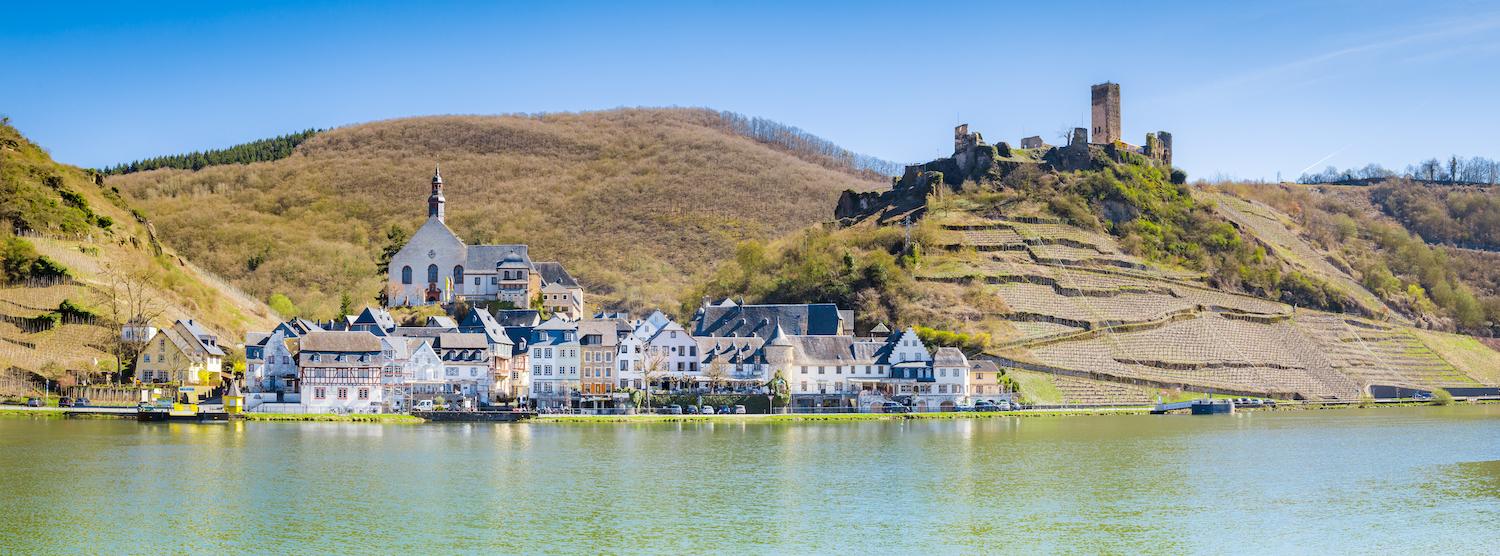
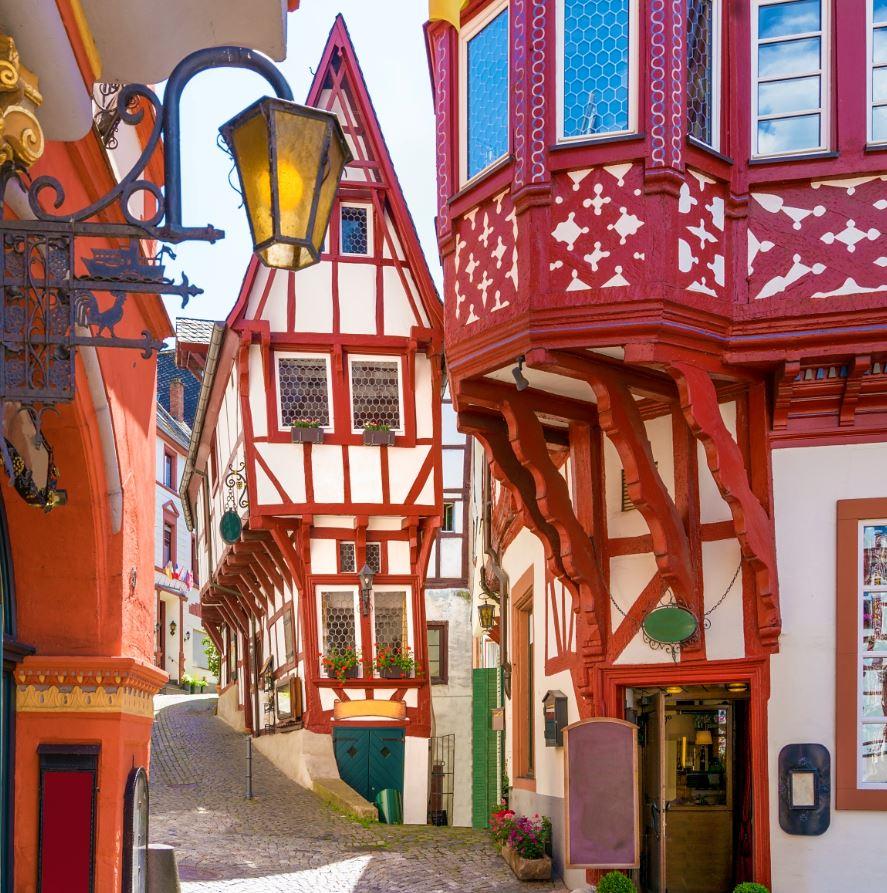
Bernkastel-Kues
One of the most beautiful towns along the Moselle is Bernkastel-Kues that consists of two old village centres. Bernkastel, located on the right bank, attracts many tourists with its old centre. The medieval market square is surrounded by 400-year-old half-timbered houses. On the square, you will find the old town hall and the Michaelsbrunnen with the statue of Saint Michael, better known as the Dragon Slayer. From the square, numerous small alleys lead up to the vineyards. High above the city, you will see Burg Landshut. This historical ruin gives you a beautiful panorama over the Moselle area. Besides Burg Landshut, the Moselweinmuseum is a popular attraction. The biggest attraction, however, is the Spitzhäuschen. This 15th century half-timbered house has a very pointed gable and is a mixture of Renaissance and Baroque style. The second village centre, Kues, in contrast to Bernkastel, is more modern. A beautiful sight to see in Kues is the late-Gothic St. Nikolaus-Hospital.
If you are also in the Moselle Valley between mid-June and the beginning of October, be sure to join in on one of the many wine festivals in the region. One of the biggest events is the Weinfest der Mittelmosel in Bernkastel-Kues, a colourful parade that ends with a magnificent fireworks display.
La Bresse
Wine lovers should make time for a visit to Neumagen-Dhron on their way to Trier. This village is considered to be one of the oldest wine villages in Germany. During excavations, the remains of a Roman wine ship were found. Those who wish can board a replica of this ship in the marina for a short boat trip.
We then set sail for Trier, the last stop on the Moselle Valley road trip. At over 2,000 years old, Trier is the oldest city in Germany. In total, the city houses nine Unesco World Heritage Sites, including the famous Porta Nigra. This imposing city gate made of grey sandstone owes its name to the fact that its outside is getting darker and darker due to various weather conditions and exhaust fumes. Besides the Porta Nigra, there are many other buildings worth seeing. Take a stroll through Trier and enjoy this vibrant city from a terrace on the Hauptmarkt. Along the way, you will see that the city is littered with remnants from the Roman period, such as the amphitheatre, the basilica and the cathedral. Trier is therefore sometimes called the second Rome.
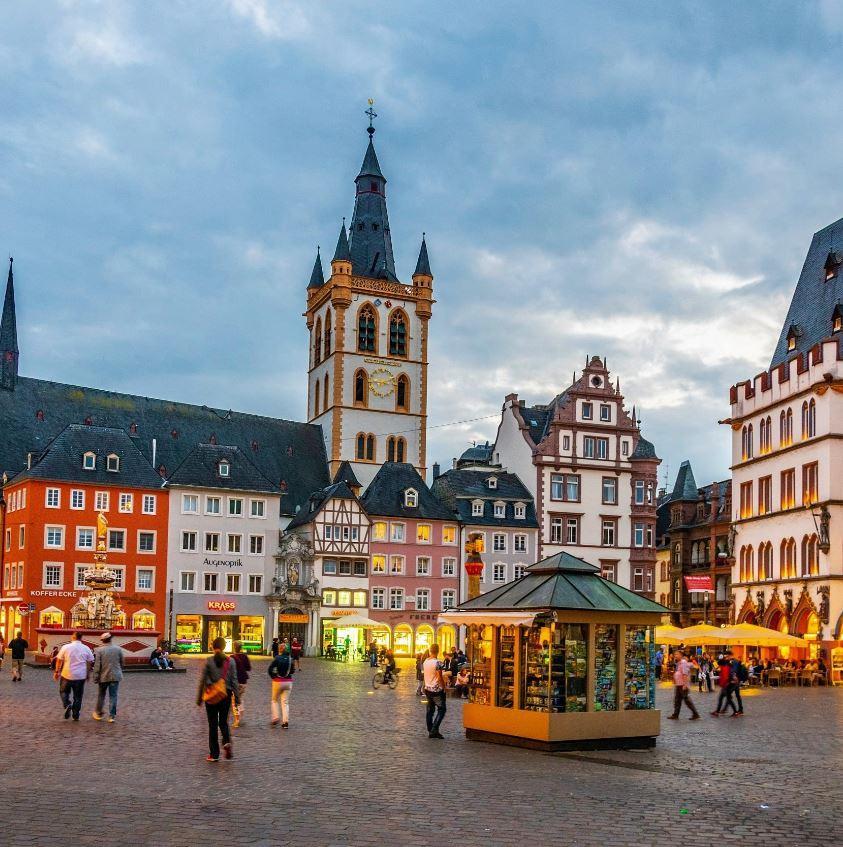
Would you like to explore the other side of the Moselle? Then check out our road trip through Luxembourg.

